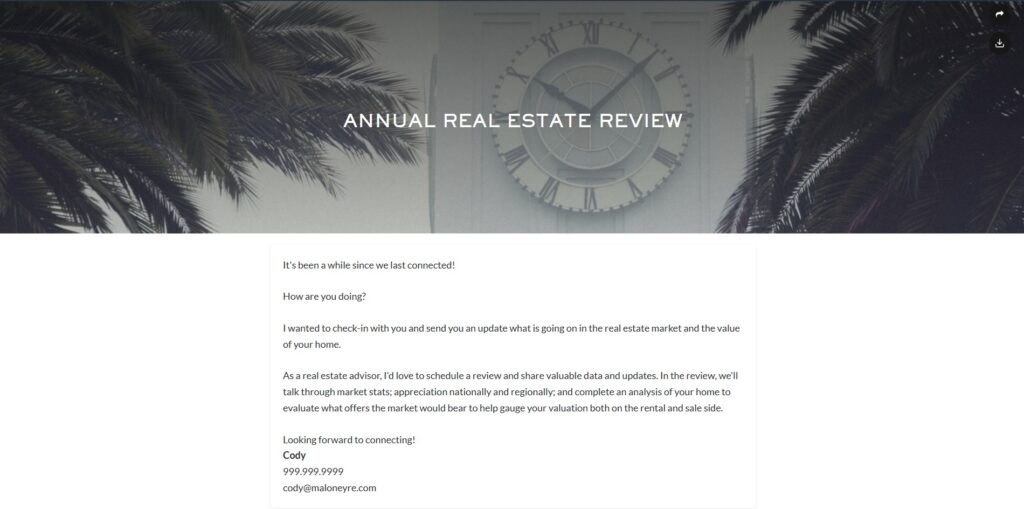Just because someone holds a real estate license doesn’t mean they’re actually equipped to be a real estate agent—at least not a good one.
I’ve worked with hundreds of agents over the years, and I can tell you: having your name on a business card isn’t what makes you professional. The real difference shows up in the day-to-day—the way you handle clients under pressure, the tech you rely on (or avoid), how well you understand contracts, and whether or not your follow-up game actually exists beyond a few templated emails.
When I started in this business over 30 years ago, things were simpler—no digital signatures, no IDX websites, no social media strategy. But even then, it was clear who was just skating by and who was actually doing the job. That hasn’t changed. What’s changed is how much more is expected of you now.
This isn’t a checklist of pre-licensing steps. This is a breakdown of what it takes to function—and thrive—as a real estate agent today. Whether you’re full-time, part-time, solo, or on a team, these are the tools, skills, and habits that separate pros from passersby.
Mastering the Core Skills to Be a Real Estate Agent
A license gets you in the door. Core skills are what keep you in the game.
I’ve seen agents with five years in the business who still don’t know how to explain a contingency clearly. I’ve also seen new agents who, within months, are closing consistently because they took the time to master the fundamentals. Skill—not time—separates the pros from the pack.
Become Fluent in Contracts
It’s not enough to know where to plug in the numbers. You need to understand what every clause means, how they interact, and how to explain them to clients in plain language.
How to sharpen this skill:
- Print out a blank copy of your local purchase agreement and annotate each section with notes in the margins: what it does, when it matters, and what risks are involved.
- Role-play contract walkthroughs with another agent. Practice explaining contingencies, inspection timelines, or earnest money as if your client has zero real estate knowledge.
- Stay up to date on contract revisions. If your local association hosts legal update sessions, attend them—even if you think you already know it.
When you sound calm and competent walking a buyer through an offer, you instantly elevate their trust in you.
Learn to Price with Precision
Zestimates don’t cut it. And even a CMA filled with comp photos won’t help if you don’t know how to adjust for the why behind price differences—location nuances, lot usability, floor plan function, and market psychology.
How to sharpen this skill:
- Visit 3–5 new listings in your area each week. Don’t just walk through—analyze them. Ask yourself: Would this sell at list price? What’s helping or hurting the value?
- After a listing closes, compare the final sale price with your own estimate. Track how close you were and what you might have missed.
- Get comfortable adjusting for conditions that don’t show up in the MLS: outdated layouts, awkward driveways, or invisible upgrades like new HVAC systems.
Pricing isn’t just a math problem—it’s a narrative. The better you are at building that story, the better you’ll be at guiding clients through it.
Communicate with Clarity—Not Jargon
The most effective agents can explain complex processes without making people feel dumb. They keep clients calm in high-stress moments and move conversations forward with clear, confident language.
How to sharpen this skill:
- Replace industry speak with real-world analogies. Instead of saying “we’ll remove the contingency,” say, “this is the point where your inspection period ends and you fully commit.”
- Don’t just ask, “Any questions?” Ask, “What part of this feels unclear or confusing?”
- Record yourself explaining a contract term or process. Then listen back. Do you sound clear? Confident? Rambling? It’s awkward, but incredibly revealing.
You don’t need to sound slick—you need to sound like someone who knows what they’re doing.
Master the Art of Managing Expectations
This is where deals are made smoother—or fall apart. Being upfront with clients about what to expect, when, and why builds trust and reduces drama. The best agents are proactive, not reactive.
How to sharpen this skill:
- Use a process map or checklist to walk clients through what happens next—every time.
- If something’s going to be tough (low appraisal, competitive offer situation, slow inspections), address it before it becomes a problem.
- Follow up before they have to ask. I set reminders in my CRM to check in 24 hours before key milestones so clients never feel like they’re in the dark.
Clear expectations eliminate most client frustrations. And when clients feel informed, they’re less likely to panic or push back unnecessarily.
Get Comfortable Negotiating Without Emotion
Real estate negotiation isn’t about “winning”—it’s about moving the deal forward in a way that works for both parties. Agents who make it personal, emotional, or combative usually kill momentum.
How to sharpen this skill:
- Focus on interests, not positions. Ask, “What’s really important to your client?” before responding to offers or counters.
- Never negotiate over text. Use a phone call or face-to-face (even virtual) to read tone and body language.
- Practice negotiating scenarios with other agents: lowball offers, tight timelines, seller concessions, multiple-offer escalations. The more you rehearse, the less reactive you’ll be when it counts.
Staying calm when the other side is tense? That’s when your client knows they hired the right agent.
Equip Yourself with the Right Tools (Because Hustle Alone Doesn’t Scale)
There’s a difference between being busy and being effective.
Early in my career, I thought productivity meant filling every hour with effort—cold calls, paperwork, running between showings. But real progress came when I started using systems and real estate tools to do the heavy lifting behind the scenes. That’s when I started seeing consistent closings without burning myself out.
If you want to be a real estate agent in today’s market—not just dabble in it—you need a tech stack that supports three things: real estate lead generation, client experience, and backend efficiency.
Here’s a breakdown of the essential tech stack categories, with top tool recommendations for each:
Category | Purpose | Recommended Tools |
CRM | Track leads, automate follow-ups | Follow Up Boss, LionDesk, Realvolve |
Digital Signatures | Paperless contracts and efficiency | DocuSign, Dotloop |
Presentation Tools | ||
Scheduling | Appointment booking and time management | Calendly, Acuity |
Communication | Client updates, video walkthroughs | BombBomb, Loom, WhatsApp |
AI & Automation | Drafting, content, systems | ChatGPT, Manus AI, Zapier |
Transaction Mgmt | Deal flow, compliance, task tracking | Trello, Notion, Sisu, Skyslope |
What This Looks Like in Practice
Let’s say you meet a new buyer lead at an open house.
Here’s how a well-integrated system handles it:
- Capture the lead via a QR code linked to your CRM with a short form.
- Automatically send a welcome email with a Highnote link introducing your process.
- Add them to a buyer drip sequence with relevant content (market stats, loan prep, what to expect).
- Schedule their consult using a Calendly link—no back-and-forth needed.
- Track showings, offers, and milestones in Trello with reminders at each step.
- Send contract documents via DocuSign when they’re ready to move forward.
- After closing, drop them into a post-transaction nurture campaign for referrals.
That’s a full-cycle system that saves you time and makes you look incredibly professional—even if you’re still building your volume.
A bloated tech stack is just as bad as no system at all. I recommend picking one tool per category to start, then expanding only if a new tool solves a clear problem in your workflow.
Ask yourself:
- Is this saving me time?
- Is this improving the client experience?
- Is this helping me convert more business?
If the answer isn’t “yes” to at least two of those, cut it.
Being a Real Estate Agent Means Running a Business (Not Just Selling Houses)
There’s a quiet moment in every agent’s career when you realize this job isn’t just about showing homes or negotiating offers. It’s about running a business—with all the risk, responsibility, and reward that comes with it.
I hit that wall in my third year.
I was closing deals, yes—but I was also exhausted, inconsistent, and flying by the seat of my pants. No tracking. No marketing plan. Just reacting to whatever came my way.
If that sounds familiar, it’s time to stop treating real estate like a job and start treating it like a business. Here’s exactly what that looked like for me—and what I coach other agents to do now.
You Need a Real Budget (Not Just Guesswork)
In my early days, I had no idea how much I was spending—or wasting—each month. I’d sign up for a postcard campaign here, sponsor a school event there, buy leads on a whim… and come tax season, I had a pile of receipts and no strategy.
Now, I run a simple but tight monthly budget, broken down into:
Category | % of GCI (Goal) | Examples |
Real Estate Marketing & Lead Gen | 10–15% | Mailers, ads, video production, CRM subscriptions |
Operations & Tech | 5–8% | Website, scheduling tools, Highnote, DocuSign |
Professional Services | 3–5% | Bookkeeper, CPA, legal support |
Education & Coaching | 2–5% | Courses, mastermind groups, conferences |
Reserve Savings (business) | 10% | Emergency fund for slow months |
I set aside a percentage of every commission for business expenses before paying myself. That shift alone created stability and freedom I never had before.
Create Repeatable Systems (So You’re Not Rebuilding the Wheel Every Time)
I used to spend hours reinventing the process for every new listing: What emails do I send? What’s the showing schedule? Where’s that pre-listing checklist?
Eventually, I sat down and built out these core workflows:
- Listing Launch System: from intake to live on MLS (templated emails, timeline, asset folder)
- Buyer Journey: templated emails for key stages (loan pre-approval, offer process, escrow timeline)
- Transaction Checklist: a shared Trello board for each deal—assign tasks to myself, my TC, or VA
When everything’s documented and repeatable, your business becomes scalable. You also make fewer mistakes, and clients notice the consistency.
Track Your Metrics Weekly (Not Just at Tax Time)
This was a game-changer.
Every Monday, I sit down for 30 minutes and update my personal scorecard. Here’s what I track:
Metric | Why It Matters |
New leads (by source) | See what’s actually working |
Conversations | Gauge real activity, not just form fills |
Appointments set | Tells me if I’m converting leads into consults |
Deals in escrow | Pipeline health |
Closed GCI | Progress toward income goals |
Expense total (YTD + MTD) | Keeps spending in check |
If I’m behind? I adjust activities, not goals. I increase calls, launch a re-engagement email, or do video CMAs for past clients.
Market Yourself Like a Brand (Not an Order Taker)
When I started out, I thought marketing meant having a nice headshot and posting “Just Sold!” graphics. It’s not. It’s about being remembered for something specific.
I built a brand around two things:
- Deep knowledge of mid-century modern homes in my area.
- Calm, process-driven guidance for first-time sellers.
Then I used tools to push that message consistently:
- Content calendar for social: 1 value post, 1 listing post, 1 story/behind-the-scenes per week
- Branded Highnote decks for listing and buyer consults
- Email newsletter every 2 weeks with market insights and client stories
- Local partnerships with lenders, stagers, and tradespeople to extend my reach
Set Real Business Goals—and Review Them Quarterly
If your only goal is “close more deals,” you’ll spin your wheels. I now set quarterly goals tied to actual business levers:
Goal Type | Example |
Lead Gen | Generate 50 new leads from open houses and referrals |
Conversion | Book 15 buyer consults and 10 listing appointments |
Financial | Gross $90K, Net $60K |
Content | Post 12 market updates, 8 reels, 3 blogs |
Each goal has a supporting strategy—and I block time weekly to execute it. If I’m not hitting the target, I adjust the plan, not the ambition.
Running your business like a business gives you two things: control and confidence. You stop living deal to deal and start building a machine that works—whether the market is hot or not.
Being a Real Estate Agent in 2026 Means Working With AI, Not Against It
If you’re still brushing off AI as a trend—or worse, avoiding it entirely—you’re setting yourself up to get left behind.
I don’t say that to scare you. I say it because I’ve watched technology reshape this business many times. From the days of printed MLS books to IDX websites, e-signatures, CRMs, social media, and now AI—there’s always been that split: agents who adapt early and agents who scramble to catch up.
AI in 2026 won’t replace the real estate agent. But it will absolutely replace agents who refuse to use it.
Where AI Is Already Embedded in Daily Agent Life
Here’s what a typical AI-integrated day looks like for a forward-thinking agent (and frankly, it’s not the future—it’s already here):
Task | How AI Handles It |
ChatGPT drafts it based on bullet points; you tweak it for voice and accuracy | |
Prepping a listing presentation | Highnote generates a dynamic deck, pulls comps, and inserts brand assets |
Creating a social post | AI writes the caption, resizes the image, schedules it via Buffer or Later |
Managing follow-ups | Your CRM (powered by AI) triggers smart reminders based on lead behavior |
Market insights | AI tools summarize trends from MLS and economic data into digestible reports |
Buyer consultation | You prep using an AI-prompted checklist based on client profile and goals |
And that’s just the baseline. In 2026, this isn’t a competitive edge—it’s expected.
AI Doesn’t Replace You—It Scales You
The key shift is this: AI takes over the repetitive, predictable, and time-consuming tasks so you can focus on what clients actually pay you for:
- Interpretation of data, not just presentation of it.
- Strategic advice based on nuance and emotion.
- Clear communication during messy, high-stakes decisions.
- Trusted leadership when things don’t go to plan.
You still have to be the brain. AI just gives you a dozen hands.
Where I’m Seeing the Biggest Wins
Let me give you a few real examples of where AI is actually helping working agents—not hypotheticals:
- One agent I coach uses ChatGPT to summarize complex inspection reports into 3-line summaries for her buyers.
- Another uses Manus AI to generate a multi-channel listing campaign in under 20 minutes—emails, social posts, ad copy, all brand-aligned.
- I personally use AI to brainstorm real estate email marketing content, rewrite scripts in a warmer tone, and prep for seller meetings with data visualizations.
Each of these saves time—but more importantly, it protects your energy and gives you back mental bandwidth to show up better for clients.
What You Can Do Right Now to Be Ready for 2026
Here’s how to get started or go deeper—no tech degree needed:
- Pick one task you hate or procrastinate on, and find an AI tool to handle the first draft.
- Experiment with prompts. AI is only as good as the questions you ask. Build a library of your best prompts and reuse them.
- Combine AI with human review. AI drafts your listing copy. You make it sing. AI summarizes the report. You decide how to present it.
- Don’t get distracted by novelty. Focus on tools that either save you time or make you more money. If it does neither, skip it.
Being an agent in 2026 isn’t about becoming a tech expert—it’s about becoming tech-empowered. The agents who lean in, test, learn, and adapt are the ones who will win more listings, serve clients better, and build resilient businesses regardless of market shifts.
Staying Visible in an AI-Saturated Market (Without Becoming Noise)
In a world where content is being pumped out at scale—much of it AI-generated—the agents who stand out will be the ones who bring a clear voice, strong perspective, and consistent presence to their market.
Here’s the hard truth: it’s never been easier to publish, but it’s never been harder to be noticed.
And yet, visibility is non-negotiable. You can be the most skilled agent in your market, but if people don’t know you exist—or what you stand for—they won’t hire you.
AI in real estate can help generate marketing materials faster, but here’s what it can’t do:
- Know what matters to your specific community
- Capture your tone, voice, or personality without direction
- Replace the real-life trust that comes from showing up consistently
So while AI can draft, design, and repurpose content, it’s your strategy and consistency that give it power.
Here’s how to keep your brand visible and relevant in a noisy, algorithm-driven world:
Build a Marketing Engine—Not Random Acts of Promotion
Many agents post only when they have a new listing. That’s not a strategy. That’s broadcasting.
A real marketing engine includes:
Channel | Content Focus | Cadence |
Instagram / Facebook | Behind-the-scenes, client stories, market tips | 3–5x per week |
Email newsletter | Market updates, open houses, value-driven content | 2x per month |
Polished presentations for leads, referrals | On demand | |
YouTube / Reels | Explainer videos, property tours, area guides | 1–4x per month |
Website / blog | SEO-optimized content (like this) | 1–2x per month |
Use AI to help batch and schedule content, but remember: your voice and your point of view are what make it land.
Be Known for Something Specific
Generic agents are forgettable. Specialists get referrals.
Ask yourself: What do I want to be the go-to agent for?
- First-time sellers who want structure and clarity?
- High-rise condos near the financial district?
- Veterans relocating with military timelines?
Once you define your “lane,” your content becomes easier to create—and your name becomes easier to remember.
Combine AI Speed With Human Authenticity
AI can:
- Draft a blog post
- Generate Instagram captions
- Suggest YouTube titles based on search trends
But only you can:
- Tell the story about the couple you helped move after 30 years in their home
- Explain why your city’s downtown inventory is suddenly spiking
- Share how you navigated a tricky dual-agency negotiation
Clients don’t hire robots. They hire people they trust. Use AI to scale output, not replace insight.
Repurpose, Don’t Repeat
One of the most underused strategies in agent marketing is content repurposing.
Here’s how a single idea becomes a multi-channel campaign:
Topic: “Why Fall Is the Best Time to List in [Your City]”
- Write a blog post (use AI to help outline and draft)
- Film a 60-second Reel or YouTube Short explaining 1–2 reasons
- Create a Highnote for potential sellers with local data
- Pull a quote for a static Instagram post
- Send a summary with a call to action in your next newsletter
Now you’ve shown up everywhere with one idea, packaged five different ways.
Track What’s Working—And Stop Guessing
Start measuring your visibility. Don’t just ask, “Did I post this week?”
Ask:
- How many leads came from organic vs. paid channels?
- Which email campaigns had the highest open/click rate?
- What posts drove real engagement or DMs?
- What Highnotes are clients spending the most time on?
Data doesn’t have to be complex. A simple monthly review of your top-performing content will tell you where to double down.
Stay Top of Mind After Closing (So You Never Start From Zero Again)
If you’ve ever looked at your calendar and realized you were starting the month with zero deals in the pipeline, that’s a client retention problem—not just a lead generation one.
One of the most overlooked parts of being a real estate agent is what happens after the closing gift is handed over. Most agents go silent. But the agents who build careers that last? They stay visible, useful, and valuable long after the keys change hands.
I don’t just want clients to remember me—I want to be the first name out of their mouth when someone says, “Do you know a good agent?”
Here’s how to make that happen.
Build a Post-Close System That Doesn’t Feel Like Spam
After closing, your clients don’t need a monthly email begging for referrals. They need relevance.
Here’s the post-close structure I use:
Timeline | Action |
1 week post-close | Personalized thank-you video + Highnote with home setup resources |
1 month | “How’s the house?” check-in + offer to answer any lingering questions |
3–6 months | Local market update + home value check-in (light, not salesy) |
12 months | Home anniversary note + invite to free home equity review |
Quarterly | Value-driven newsletter with community updates, tips, and client stories |
These don’t feel like campaigns—they feel like care. That’s the point.
Use Highnote as a Living Client Hub
One way I’ve stayed sticky with clients is by using Highnote not just for listing presentations—but as a homeowner resource deck. After closing, I send them a personalized Highnote that includes:
- Utility setup links
- Local contractor contacts (handyman, HVAC, landscaper)
- How to file for homestead exemption (if applicable)
- Info on refinancing timelines or equity reviews
This becomes their go-to reference—and every time they open it, your brand is in front of them.
Create a “Client Circle” That Feels Exclusive
Treat past clients like VIPs. A few simple ways I do this:
- Host a casual annual client appreciation event (even a coffee truck at a park)
- Offer an exclusive referral rewards program (with meaningful, local gifts—not branded water bottles)
- Share early access to listings or invite-only webinars on market updates
- Send them annual real estate review
When clients feel like part of something beyond the transaction, they stay engaged—and keep sending business your way.
Be Useful on Social—Not Just Visible
You don’t need to DM every past client weekly. You just need to show up in their world consistently.
Post content that speaks to homeowners, not just buyers and sellers:
- Seasonal maintenance tips
- Local business spotlights
- Tax reminders or home improvement ROI stats
Even if they’re not moving for years, they’ll keep seeing you as the local expert who shows up with value—not just listings.
Track and Segment Your Past Clients
Not all past clients need the same touchpoints.
In my CRM, I tag clients by:
- Deal type (buyer, seller, both)
- Move timeline (likely to move in 2–5 years? Empty nesters?)
- Referral strength (top referrer, one-time deal, etc.)
This lets me tailor my outreach—so I’m not sending a “Thinking of selling?” email to someone who just bought six months ago.
The Real Goal: Never Wonder Where Your Next Client Is Coming From
The more you nurture your past clients, the less you rely on cold leads or ad spend.
When you treat every client like the beginning of a long-term relationship—not just a transaction—you’ll wake up each month with referrals in your inbox and your brand growing organically in your market.










